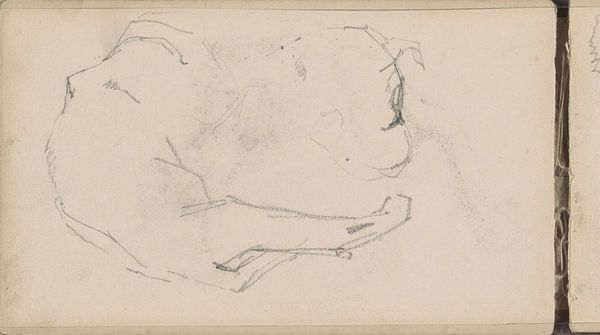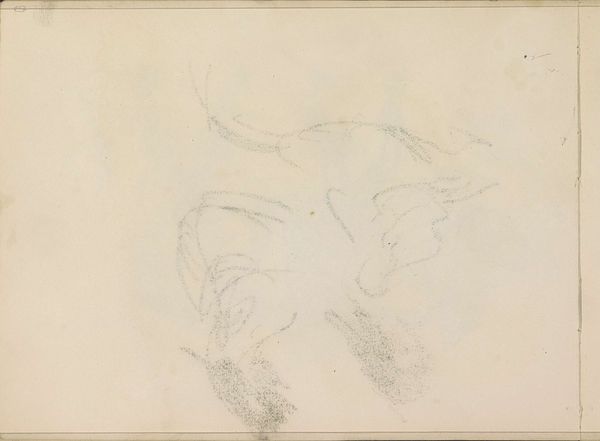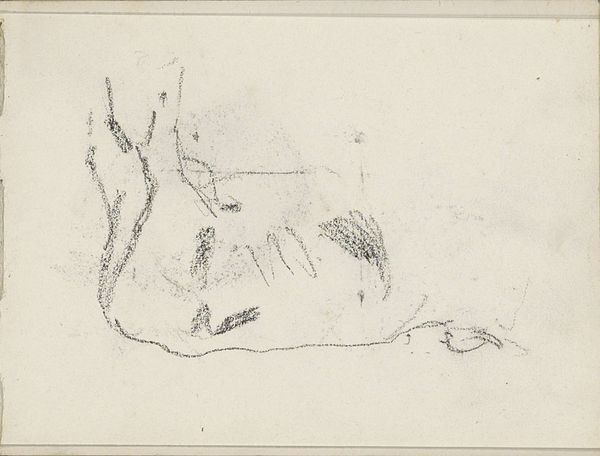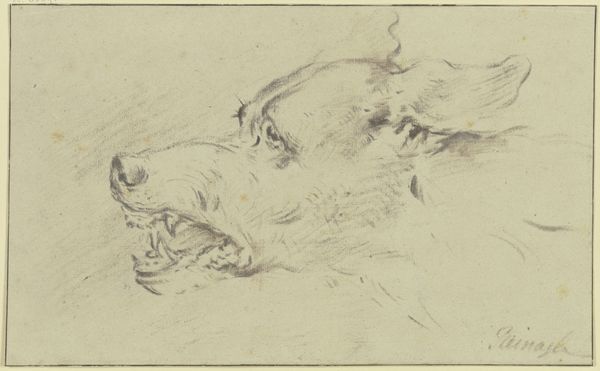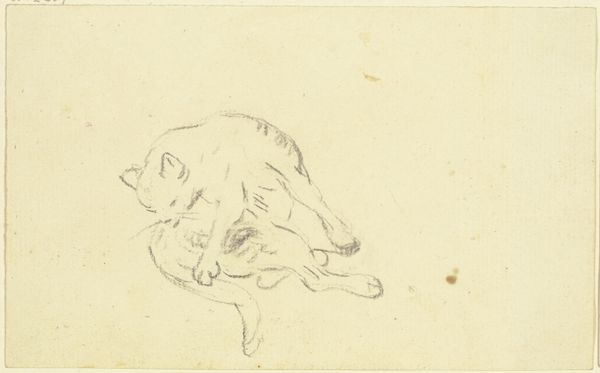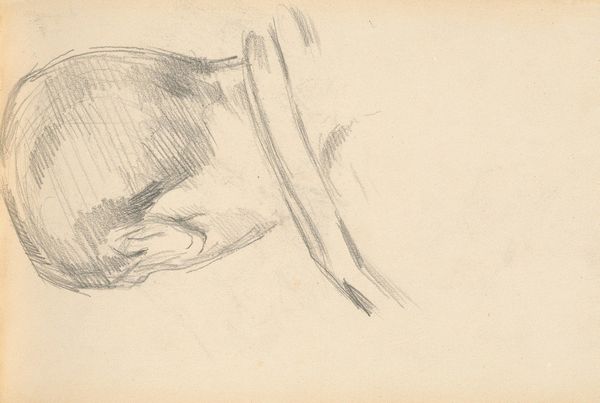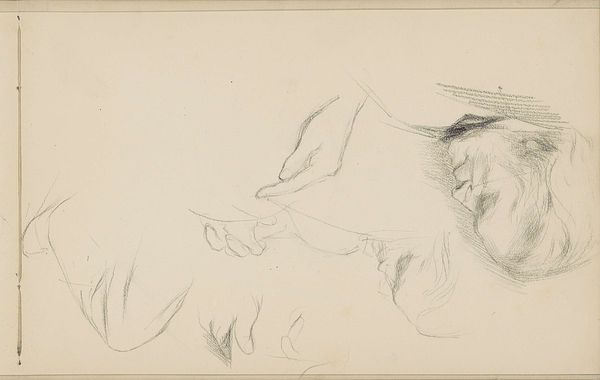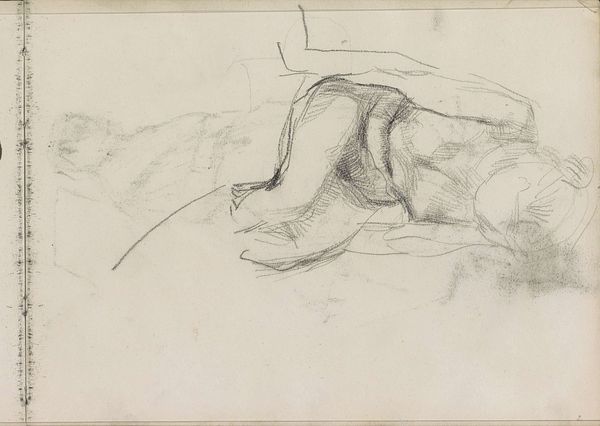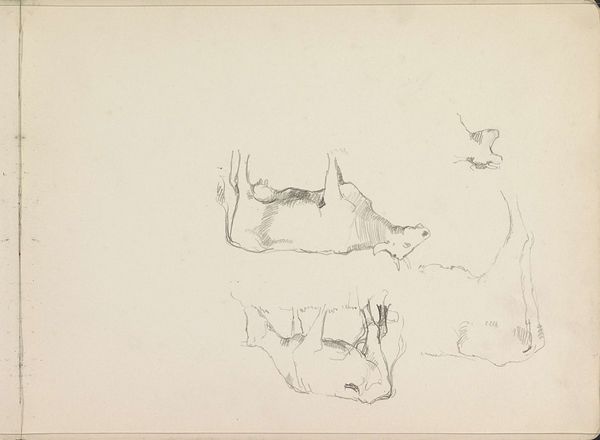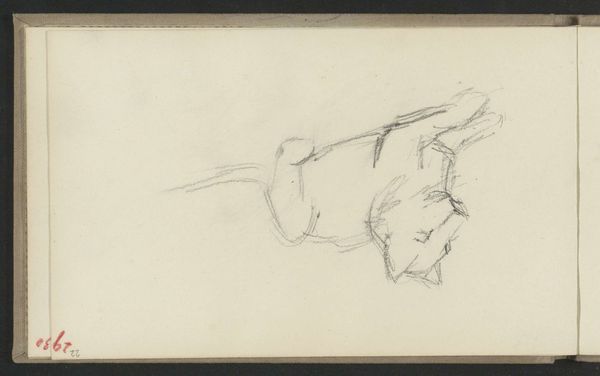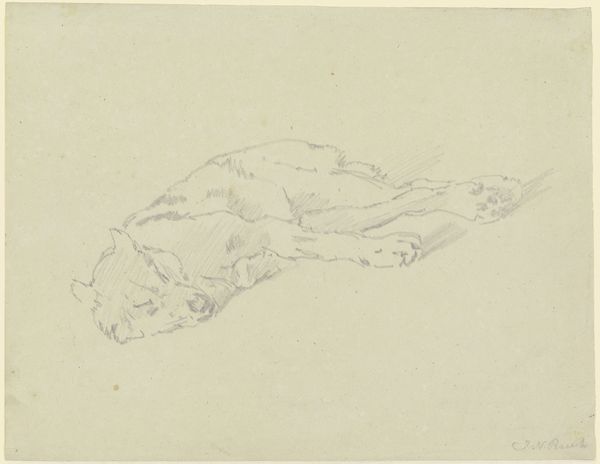
Copyright: Rijks Museum: Open Domain
Editor: Here we have "Abklatsch van de krijttekening op blad 13 recto," a pencil drawing by Isaac Israels, dating from around 1890 to 1920. It’s currently held at the Rijksmuseum. I'm struck by the looseness of the lines, almost as if the artist captured a fleeting thought. How do you interpret this work based on its form? Curator: Focusing purely on the formal aspects, we observe a clear emphasis on line and value. The sketch’s composition directs the eye to follow the darkest areas, created by layered pencil strokes, which define the main form. Can you identify a sense of spatial depth conveyed solely through tonal variation, without reliance on perspectival cues? Editor: I think so. The heavier shading gives a sense of mass to the objects, placing them forward, while the fainter lines recede. But what does it all signify? What’s being represented? Curator: The work presents figuration, albeit gestural. Israels is concerned more with the optical effect of the light and shadow, than the specifics of representation. Ask yourself, how does the materiality of the pencil, as a medium, shape our understanding of the artist's intention here? Editor: The pencil marks give the work an unfinished quality. It's not striving for perfection; it's about capturing an impression. Curator: Precisely. The sketch favors spontaneity. It showcases the process of art-making, where the means of production--the inherent properties of graphite and paper—are not concealed by elaborate finish. It encourages the viewer to consider artistic thought through visible application of technique. Editor: It’s fascinating how much you can glean from the form alone. I was too focused on trying to "decode" the subject matter. Curator: Indeed, in works such as this, our attention can be firmly placed upon the visual syntax. The object portrayed serves merely as scaffolding for explorations in composition, materiality, and line. Editor: That perspective gives me a deeper appreciation for Israels’ intention in this piece. Curator: Recognizing this intentionality is fundamental to appreciating its formal qualities as aesthetic ends unto themselves.
Comments
No comments
Be the first to comment and join the conversation on the ultimate creative platform.
